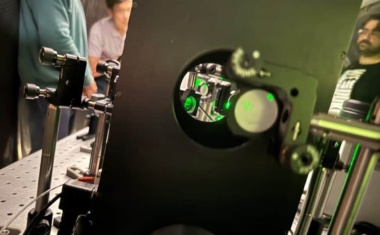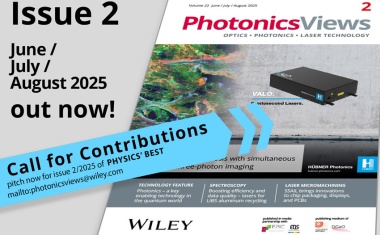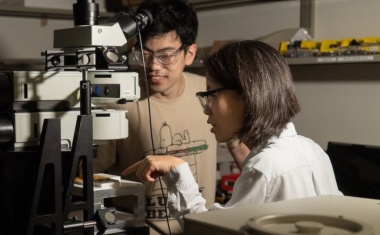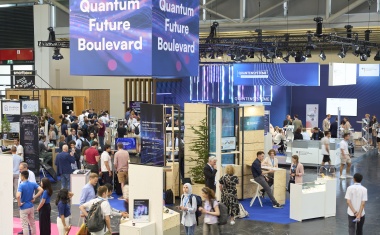Two-photon lidar overcomes range limitations
The findings have the potential to lead to the development of novel sensing technologies.
New research has unveiled a new advancement in light detection and ranging – lidar – technology, offering unparalleled sensitivity and precision in measuring the distance of remote objects. This research is a result of a collaboration between the group of Yoon-Ho Kim at Postech in South Korea, and the Quantum Science and Technology Hub at the University of Portsmouth. In a pioneering move, they have introduced two-photon lidar, eliminating the range limitations imposed by coherence time, to achieve accurate and precise ranging of a remote object situated far beyond the coherence time dictated by the spectral bandwidth of the light source.

The research, inspired by recent works led by Vincenzo Tamma, Director of the Quantum Science and Technology Hub, capitalizes on two-photon interference of thermal light beyond coherence. Unlike traditional coherent lidar, where the coherence time is a limiting factor, the second-order interference fringes in coherent two-photon lidar remain unaffected by the short coherence time of the light source, determined by its spectral bandwidth. The experimentally demonstrated scheme takes advantage of a simple thermal light source, e.g. sun light, interacting with a double slit mask with two slits A and B separated beyond the coherent length of the source, and two cameras. The light emitted by the two slits either takes a path of known optical length towards the first detector D1 or propagates towards a remote object at unknown distance and after being reflected by it is detected by the second detector D2.
Recent research led by Tamma, in collaboration with the University of Bari and Postech in South Korea, first theoretically demonstrated that, even in presence of turbulence, it is possible to estimate the distance of the remote object by measuring the spatial correlations in the intensities of the light detected by the two detectors. The sensitivity to the unknown distance from the double slit to the object is consequence of the phase-dependent interference between two two-photon paths: from pinhole A to detector D1 and from pinhole B to detector D2 and from pinhole A to D2 and from pinhole B to D1. It is in such a phase-dependent interference that the value of the distance of the object is encoded and retrieved through spatially-correlated measurements.
If either one of the two slits are closed, no phase-dependent interference can be observed. This is the case of the famous Hanbury-Brown and Twiss (HBT) experiment, which paved the way in 1954 to the development of quantum optics and quantum technologies. Indeed, in standard HBT two-photon interference arising from the contributions of only a single slit at the time, no interference beatings can be observed by performing correlation measurements in the light intensities at the two detectors. Nonetheless, when both slits are open one can observe an additional, but this time phase-dependent, interference contribution depending on the unknown distance of the remote object and arising from the interference between the two possible two-photon paths from the two distinctive slits to the two detectors. The arising of such phase-dependent contribution is a quite counterintuitive effect from the fundamental point of view and at the very heart of the technological impact of such technique, which has been now experimentally demonstrated in the laboratory of Yoon-Ho Kim.
The new study reveals that coherent two-photon lidar is robust to turbulence and ambient noise, marking a significant leap forward in the applicability of lidar technology in challenging environments. “This breakthrough opens up novel applications of two-photon correlation in classical light, pushing the boundaries of what was previously thought possible in lidar technology,” said Tamma. “Our coherent two-photon lidar technique not only overcomes the range limitations associated with coherence time but also demonstrates remarkable resilience in the face of external disturbances.”
The findings have the potential to lead to the development of novel sensing technologies based on the use of correlation measurements with thermal light. These could be potentially used for applications in fields such as autonomous vehicles, robotics, environmental monitoring, and more. The ability to measure distances beyond the coherence time with increased accuracy and reliability has the potential to reshape industries reliant on precise distance measurements. The research team envisions collaboration with industry partners and stakeholders to further develop and implement coherent two-photon lidar in real-world scenarios. (Source: U. Portsmouth)
Link: Quantum Science and Technology Hub, University of Portsmouth, Portsmouth, United Kingdom









